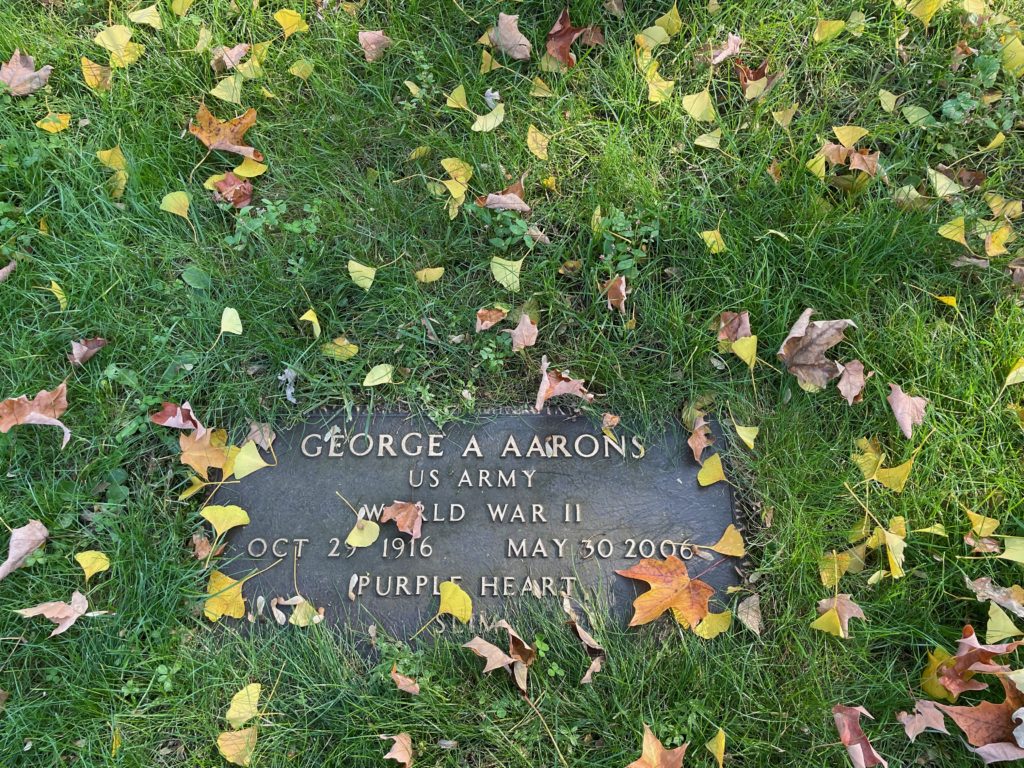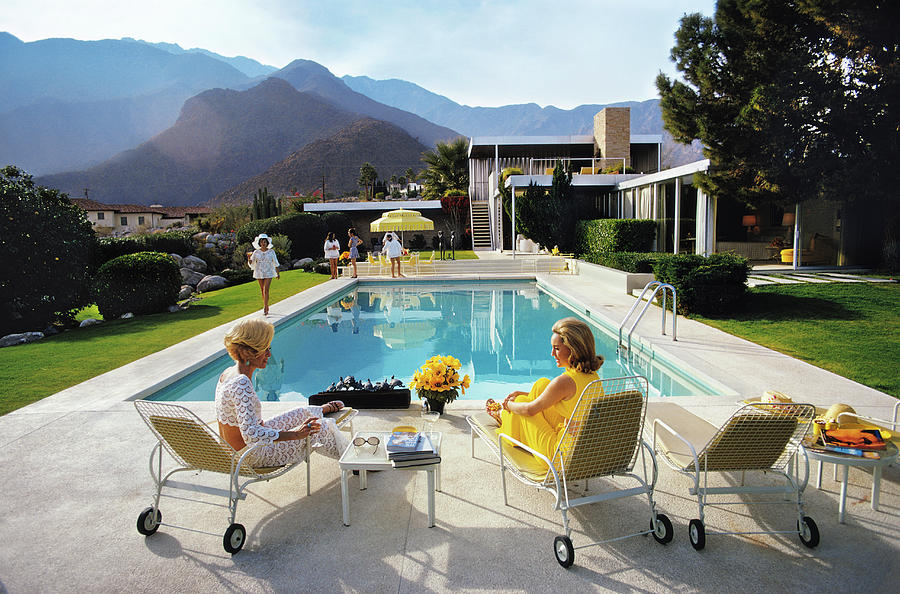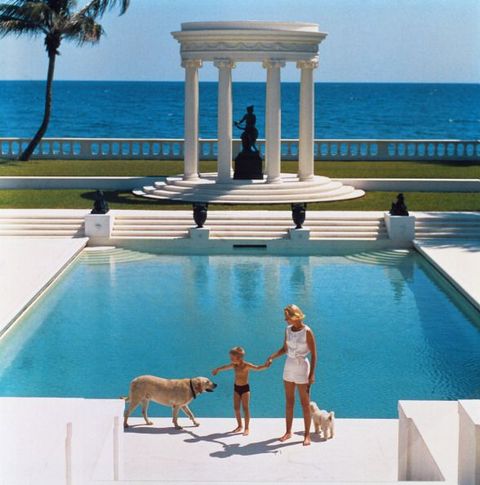Erik Visits an American Grave, Part 1,070
This is the grave of Slim Aarons.

Born in 1916 in Manhattan, George Aarons, soon known as “Slim,” went to local high schools. He grew up dirt poor, in a Yiddish family. He never talked about his family or background when he was an adult and famous. It was only after his death that his wife and kids learned about how awful his childhood was, with an absent father he hated, a brother who suffered from severe mental illness, and very real poverty. He had claimed that he grew up in New Hampshire, was an orphan, and just wouldn’t talk about the past. It really wasn’t known to the public where he was from until a 2017 documentary on the man investigated the situation and found all this out. Must have been pretty bad as a kid. There’s also the strong possibility that if it was clear he was Jewish (though he didn’t change his name so I assume lot of people at least initially thought he was Jewish) that he would not have broken into the elite world where he would spend his professional career. Fair enough.
Anyway, Aarons did have one thing to hang his hat on as a kid–he was interested in photography and became very good at it. When World War II broke out, Aarons joined the military and was assigned as a photographer. He was in the worst possible combat and actually won a Purple Heart. He hated it all. He despised the military, war, and everything else. He saw some pretty awful things at Monte Cassino and he was one of the photographers there when the U.S. discovered the Nazi concentration camps. So one can see how he would want to forget all that and live the good life when he returned home.
When Aarons returned from the war, he went to California to hang out with attractive women and photograph them and one assumes do a bit more than that with some of them. He said that Hollywood “was as far away from reality as I could have imagined getting.” Again, he was a really good photographer. If there’s one thing Hollywood loves, it’s a great photographer. And that was Aarons. He soon got hired for big gigs by Hollywood studios and could sell his photographs to the magazines. Aarons had no interest in tough, hard-hitting photographs. He wanted to have fun. He liked celebrities and he liked to take pictures of them. As he put it, his style of photography was “Attractive people doing attractive things in attractive places.” Can’t say this was deep work, but it is historically important. He soon got hired by magazines to shoot for them, including Life, Holiday, and Town & Country. By the late 50s, he was the art director at Holiday. This is not a magazine with which I was familiar with before writing this post, but it seems to have been a glamour magazine showing a newly affluent America how to live the good life. So that’s what Aarons determined to do with his own photographs and those he hired.
Aarons was also not a photographer who liked set pieces. He didn’t spend time making up his subjects. He wanted to follow them around and watch glamorous people do glamorous things. In the Hollywood of the 50s and 60s, this was not that hard to do. It was the height of glamour. A lot of this had to do with trust too. Hollywood stars knew he wouldn’t screw them over. He was their photographer. They were comfortable around him. This of course helped his career tremendously.
Aarons was already such a big deal by the mid-50s that Alfred Hitchcock’s based the apartment and Jimmy Stewart character in Rear Window on Aarons. He was famous, but if you wanted, you could easily dismiss him as a fashion photographer. But that would really make him mad. He said he had no interest in fashion photography. He was a documentary photographer. As he put it, “I didn’t do fashion. I did the people in their clothes that became the fashion.”
As Aarons aged, he was aware of the importance of his work in documenting the history of American high society in its peak decades of glamour. By the 1970s, the kind of work he did made him somewhat out of fashion. After all, even the Hollywood elite scruffed it up by that decade. So the work wasn’t coming at quite the same rate and it just wasn’t Aarons’ scene. He sold his entire catalog to Getty Images in 1997, ensuring it would be preserved.
Aarons died in 2006, at the age of 89.
Let’s look at some of Aarons’ work.




I can’t really say this makes me want to hang out with bored rich people, but they are certainly good photographs.
Slim Aarons is buried in Mount Auburn Cemetery, Cambridge, Massachusetts.
If you would like this series to visit other American photographers, you can donate to cover the required expenses here. Diane Arbus is in Hartsdale, New York and Robert Capa is in Amawalk, New York. Previous posts in this series are archived here.
